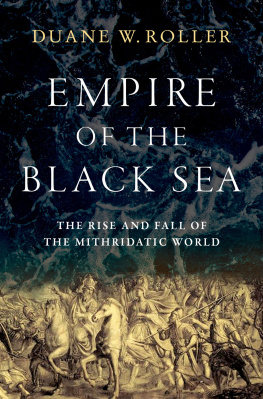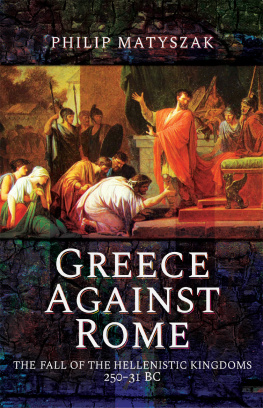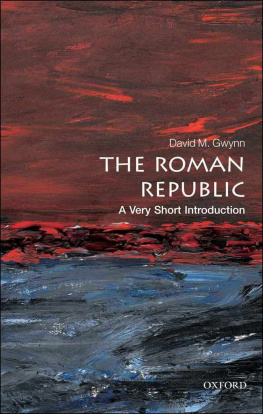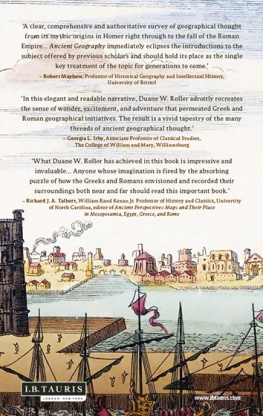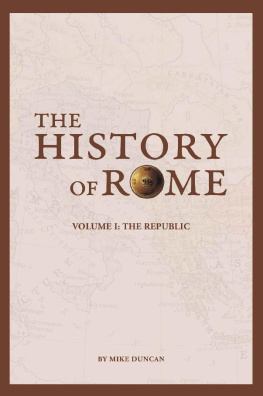EMPIRE OF THE BLACK SEA

Oxford University Press is a department of the University of Oxford. It furthers the Universitys objective of excellence in research, scholarship, and education by publishing worldwide. Oxford is a registered trade mark of Oxford University Press in the UK and certain other countries.
Published in the United States of America by Oxford University Press
198 Madison Avenue, New York, NY 10016, United States of America.
Oxford University Press 2020
All rights reserved. No part of this publication may be reproduced, stored in a retrieval system, or transmitted, in any form or by any means, without the prior permission in writing of Oxford University Press, or as expressly permitted by law, by license, or under terms agreed with the appropriate reproduction rights organization. Inquiries concerning reproduction outside the scope of the above should be sent to the Rights Department, Oxford University Press, at the address above.
You must not circulate this work in any other form and you must impose this same condition on any acquirer.
Library of Congress Cataloging-in-Publication Data
Names: Roller, Duane W., author.
Title: Empire of the Black Sea : the rise and fall
of the Mithridatic world / Duane W. Roller.
Description: New York : Oxford University Press, 2020. |
Includes bibliographical references and index.
Identifiers: LCCN 2019033327 (print) | LCCN 2019033328 (ebook) |
ISBN 9780190887841 (hardback) | ISBN 9780190887865 (epub) |
ISBN 9780190887858 | ISBN 9780197500552
Subjects: LCSH: Mithridates VI Eupator, King of Pontus, approximately 132 B.C.63 B.C. | PontusKings and rulers. | PontusHistory. | Black Sea RegionHistory. |
RomeHistoryMithridatic Wars, 88-63 B.C.
Classification: LCC DS156.P8 R65 2020 (print) | LCC DS156.P8 (ebook) |
DDC 939/.33dc23
LC record available at https://lccn.loc.gov/2019033327
LC ebook record available at https://lccn.loc.gov/2019033328
Contents
Part I
Pontos to 120 bc
Part II
Mithridates VI the Great
Maps
Figures
Over a period of more than two centuries, the Pontic dynasty of northern Asia Minor evolved from modest beginnings into one of the most powerful states in the Greco-Roman world. Its founder, Mithridates I, was a refugee from the unforgiving and violent politics of the years after the death of Alexander the Great in 323 bc. The dynasty culminated in its last and most famous king, Mithridates VI the Great, who died in 63 bc. Pontos was originally the north central portion of what is today modern Turkey, but at its peak the kingdom controlled central Asia Minor and most of the coastal Black Sea, with trade and commercial connections into Armenia, toward the Iranian plateau, the Caucasus, and the barbarian hinterland north of the sea. Eventually Pontos was rivaled only by Ptolemaic Egypt and the lengthening reach of the Roman Republic.
Much of the modern interest in the ancient Pontic kingdom has centered on the career of Mithridates the Great, but he was merely the last representative of a dynasty that began in the early third century bc as the world that had been left in disarray by the death of Alexander the Great settled into a number of hereditary and contentious monarchies. Pontic power was slow to develop, but by the end of the third century bc Pontos had become one of the major regional states of the Hellenistic world. With the arrival of the Romans in Asia Minor, early in the following century, local politics became tangled with the effects of Roman policy, and the history of the last century of the Pontic dynasty is one of ever more complex relations with that power. After the accession of Mithridates VI around 120 bc, the dynasty both reached its peak and began its decline, eventually yielding to the inexorable power of Rome, as was to happen to the other surviving kingdoms founded after Alexanders death.
The present work extends from the world of the successors of Alexander the Great to the Roman era and draws heavily on the concept of the allied king or queen, monarchs on the fringes of the Roman world who entered into a symbiotic relationship with that power, for better or worse, most famously Cleopatra VII and Herod the Great.
There are certain difficulties inherent in writing a study of the Pontic dynasty. As in all historiography, sources can be deficient or lacking, and the emphasis placed in ancient literature on certain events or personalities may reflect more the survival of the sources than their perceived contemporary importance. Moreover, after the arrival of the Romans the extant writings begin to reflect the victors point of view, a well-known problem in late Hellenistic history and most pernicious in the case of Cleopatra VII. And, as always, women, regardless of their importance, tend to be faint or virtually nonexistent in the narrative.
As before, the author wrote the book in his study in Santa Fe, having conducted research in the Harvard College Library and the library of the University of California at Berkeley, as well as utilizing the excellent interlibrary loan services of the Ohio State University. He would particularly like to thank the Emeritus Academy of the Ohio State University for grant support. Among the many who assisted in the completion of this work, he would like especially to thank Stanley Burstein, David Braund, Emma Dodd of Numismatic Ars Classica, Amelia Dowler of the British Museum, Patric-Alexander Kreuz, Kenneth Lapatin, Lee Patterson, Letitia K. Roller, Lisbet Thoresen, Stefan Vranka and many others at Oxford University Press, Claudia Wagner, and Wendy Watkins and the Ohio State University Center for Epigraphical and Paleographical Studies.
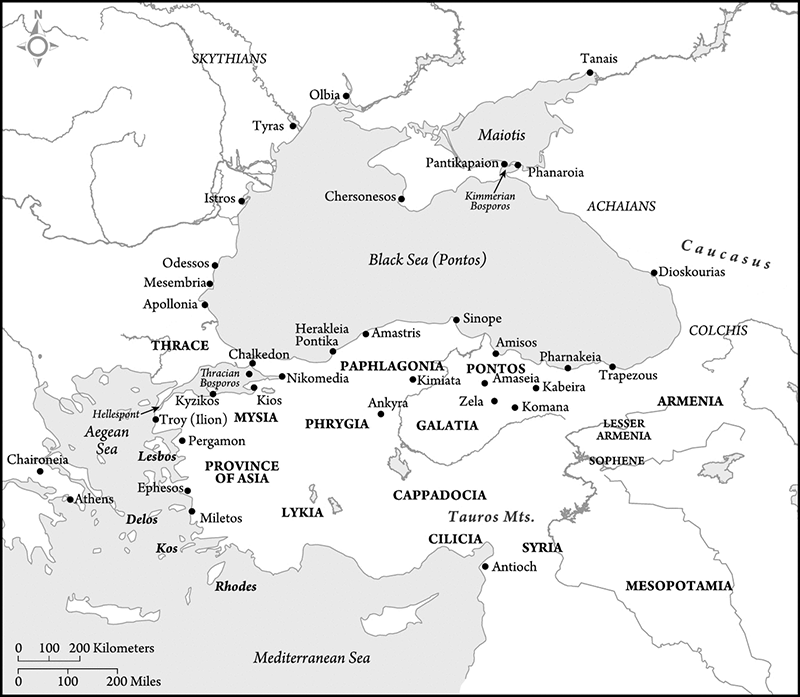
Map 1 Localities mentioned in the text
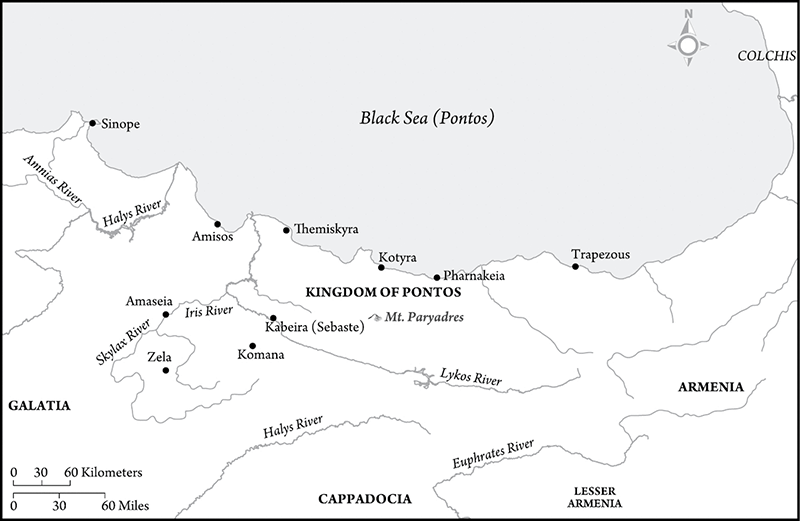
Map 2 Pontos during the period of the Mithridatic dynasty
This chart is greatly simplified, designed to show the line of descent from Mithridates I the Founder to the royal children of Mithridates VI the Great. Ruling personalities in Pontos and Bosporos are shown in capitals. For a more complete stemma, see (Toronto 1990), stemma 2 (as well as the other stemmata in that volume), and BNP Chronologies, 11011.
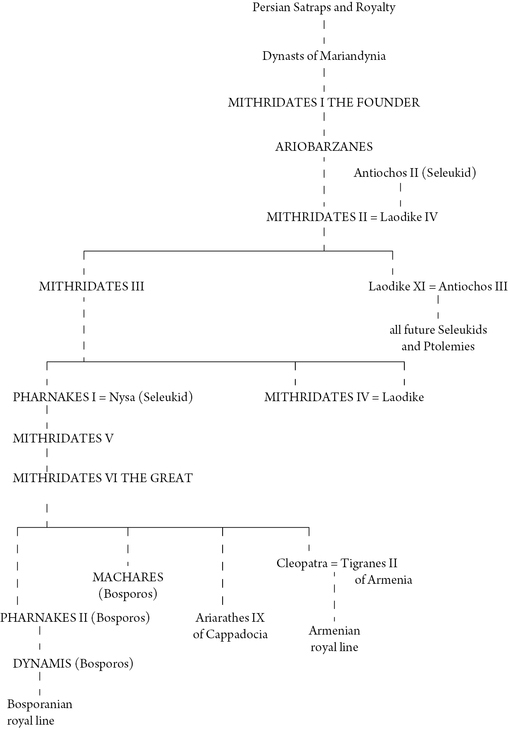
Mithridatesthe sixth king of Pontos to bear that nameis the best known and last ruler of a dynasty that extended back to the early third century bc and his ancestor Mithridates I the Founder. Mithridates I was a product of the world after the death of Alexander in 323 bc. Alexander had left no plans for the organization of his vast empire, and thus there were forty years of political maneuvering, often violent, as the territories that he had left coalesced into three major kingdoms and several minor ones, which extended from the Greek peninsula to India. One of these was Pontos.

